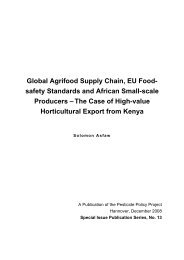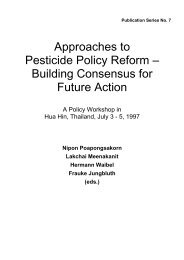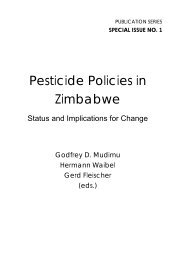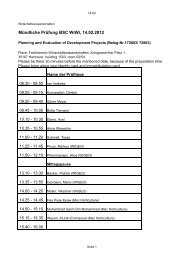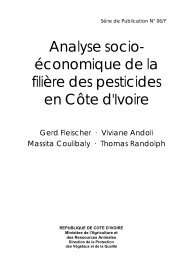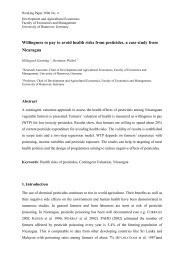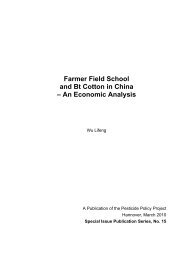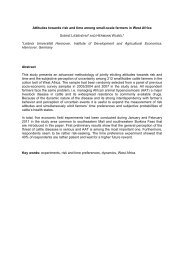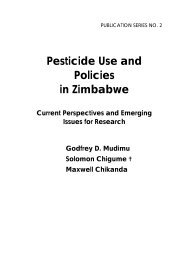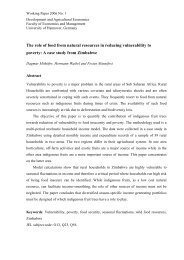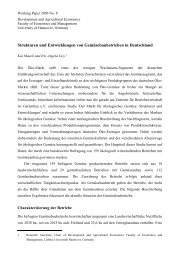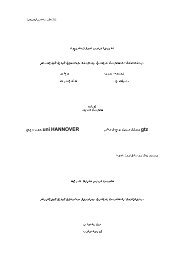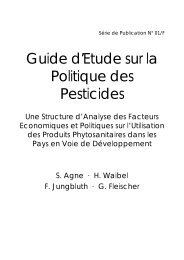PPP Special 08 - Institut für Entwicklungs- und Agrarökonomik
PPP Special 08 - Institut für Entwicklungs- und Agrarökonomik
PPP Special 08 - Institut für Entwicklungs- und Agrarökonomik
You also want an ePaper? Increase the reach of your titles
YUMPU automatically turns print PDFs into web optimized ePapers that Google loves.
31<br />
Table 4.12:<br />
Economics of cotton production, across farm<br />
comparison, irrigated [US$/ha]<br />
Type of Cost<br />
Non-Bt Cotton Bt Cotton Only-Bt cotton<br />
Mean Mean Mean<br />
Pesticides 54.43* 24.66 23.28*<br />
Fertiliser 45.90 51.83 47.04<br />
Labour 144.76 133.53 151.90<br />
Seed 19.59* 79.24* 80.12*<br />
Irrigation 34.50 52.27 91.90<br />
Total Variable Costs 238.47 260.80 296.92<br />
Total Yield [kg/ha] 1556.10 1759.30 1818.00<br />
Total Revenues 515.87* 683.30 700.36<br />
Gross Margin 359.07 443.90 431.43<br />
*Means are statistically significant at 95%<br />
Source: Own Calculation, 2003<br />
The costs for pesticides were only a small proportion of the total<br />
production costs. As mentioned before, according to Khadi et al. (2002),<br />
pesticides count for 80 per cent of total production costs. In this case<br />
study the pesticide costs were especially low due to climatic conditions.<br />
As expected, costs of pesticides in Bt cotton production were lower than<br />
for non-Bt cotton. For irrigated conditions, the pesticide costs were<br />
significantly higher for non-Bt cotton.<br />
Seed costs for Bt cotton were about four times higher than for<br />
conventional varieties and outweighed the difference in pesticide costs.<br />
The irrigation cost for those farmers who grow only Bt cotton was higher<br />
than for those growing both. Possibly, farmers who switched to Bt cotton<br />
invested more in water given the prospects of higher yield from Bt<br />
cotton or they were farmers with better access to water in the first place.<br />
The fact that most of the irrigated cotton was Bt cotton (78 per cent)<br />
supports this assumption.<br />
Besides irrigation costs, there was no other cost item which showed a<br />
significant difference. The gross margins for irrigated cotton were<br />
significantly higher than those for non-irrigated cotton (Figure 4.8). It is<br />
remarkable that the revenue of Bt cotton <strong>und</strong>er non-irrigated conditions<br />
was lowest for farmers who switched to Bt varieties but highest when



